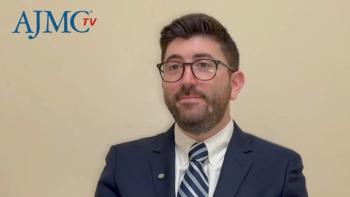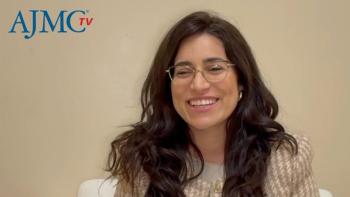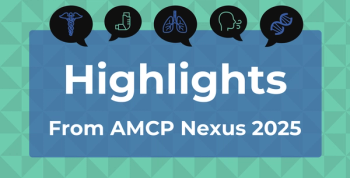
Real-World Evidence Standards Bridge Research, Clinical Decision-Making: Cate Lockhart, PharmD, PhD
Real-world evidence helps pharmaceutical companies and payers communicate more effectively.
In this Q&A, Cate Lockhart, PharmD, PhD, chief science officer of the Academy of Managed Care Pharmacy (AMCP) and executive director of the Biosimilars and Biologics Collective Intelligence Consortium, shares how real-world evidence (RWE) is transforming health care by connecting research findings to clinical practice. The AMCP Research Institute’s RWE Initiative introduces standards that help manufacturers and payers communicate RWE effectively.
The American Journal of Managed Care® (AJMC®): Can you share some of the key criteria of the AMCP RWE standards and how they can be used to facilitate communication between manufacturers and payers?
Lockhart: The AMCP RWE Standards are the first deliverables to emerge out of the AMCP RWE Initiative. Developing the standards was an extremely collaborative process, and through iteration that led to consensus, we ended up with a final set of standards. The standards consist of 2 components. The first is the RWE Framework, which lays out the ecosystem of relevant RWE studies and related end points that payers could find useful throughout the drug lifecycle. This was a key element for all stakeholders to understand how RWE could be used and what types of information would be useful prior to product launch through post-marketing comparative safety and effectiveness studies.
The second component is a set of 29 criteria we identified that reflect the information most useful for payers to understand when they are assessing an RWE study and applying it to their decisions as part of their totality of evidence. We fashioned the criteria into a checklist to aid manufacturers in addressing all the key points that payers want to know about. These include having a clear description of the data source and the study population, describing why the population is relevant, and [explaining] how generalizable the results are. Transparency is important to payers, and the checklist offers an outline to encourage that transparency around elements that are most important to payers. So the AMCP RWE Standards provide a platform to trigger dialogue between manufacturers and payers.
AJMC: What are the most common challenges you’ve seen in aligning RWE quality expectations between manufacturers and payers, and how do the standards address them?
Lockhart: One of the barriers we learned about early on in the process of creating the AMCP RWE Standards was that our manufacturer partners were generating RWE, but our payer partners were not aware of it and didn’t know how to get it or, honestly, didn’t quite know what to do with it in their decision-making process. The standards can help support manufacturers as they develop their RWE strategy and design their RWE studies to be sure they are generating information that will be useful to the payers. That can help them streamline their RWE development process, and then the standards give payers a sense of what they can expect to see when they receive RWE studies.
The goal is that the standards will provide a consistent communication tool and also allow for, and encourage, transparency for manufacturers to provide detail on their study designs that maybe wouldn’t be published in a peer-reviewed manuscript. For example, in a journal publication, the data source that was selected for the RWE study will be listed, but generally not the reasons why it was selected and why it is relevant for the patient population of interest, and to discuss the generalizability of the results. Payers are very interested in this kind of information.
AJMC: How do the standards account for variability in data sources—such as claims, electronic health records, or patient-reported outcomes—when assessing study quality and relevance for decision-making?
Lockhart: The standards are a tool for describing and communicating details of RWE studies, so they provide an opportunity for RWE producers to share relevant details about the data sources they chose for the study. This would include strengths and limitations of the chosen data sources and an opportunity to describe the study methods in more detail, including why the selected data source is relevant for the research question.
AJMC: As RWE continues to evolve with advances in artificial intelligence (AI) and data analytics, how might these standards need to adapt?
Lockhart: We definitely anticipate these AMCP RWE standards will evolve with evolving technology like AI, and they are meant to be nimble enough to adapt them as needed. But also with the increasing sophistication of the data themselves—such as data linkages that can expand the types of research questions that are suitable. We are also actively working toward leveraging AI to build a tool to help streamline how the AMCP RWE Standards are used.
For example, we would like to have a platform where someone can input (eg, upload) an RWE study, and the AI would create a document that contains a summary of the information in the Standards that payers want to know. This would still have a "human in the loop" to ensure quality and accuracy, but could really improve efficiency in that communication.
Newsletter
Stay ahead of policy, cost, and value—subscribe to AJMC for expert insights at the intersection of clinical care and health economics.













































